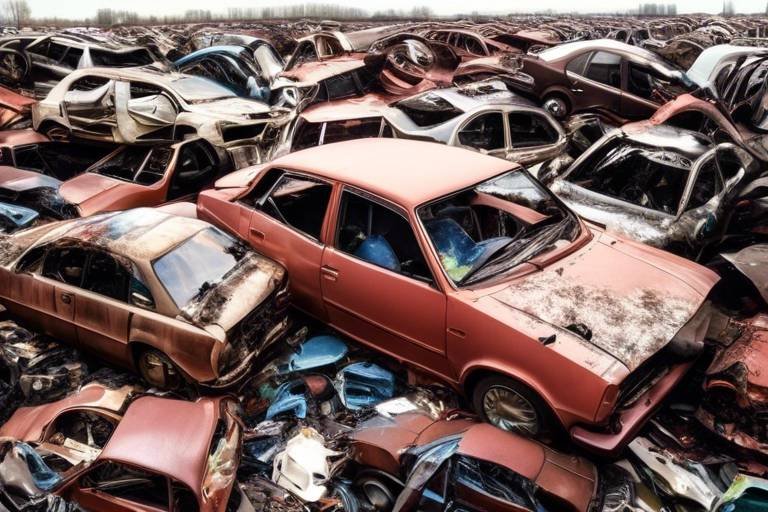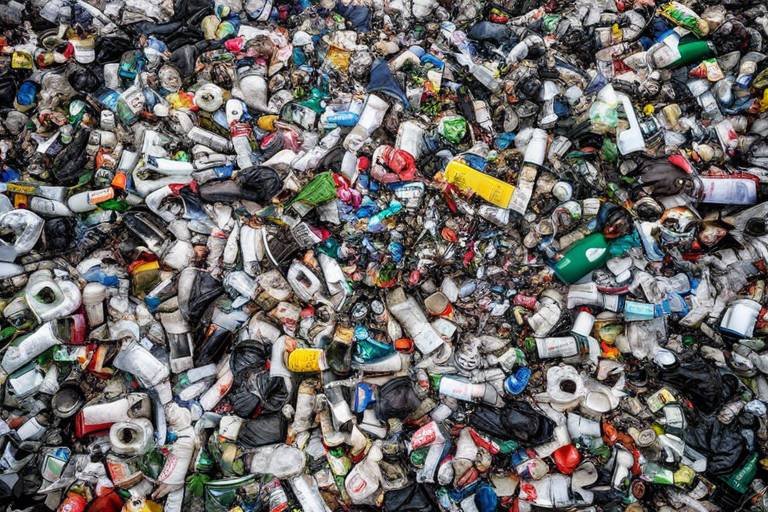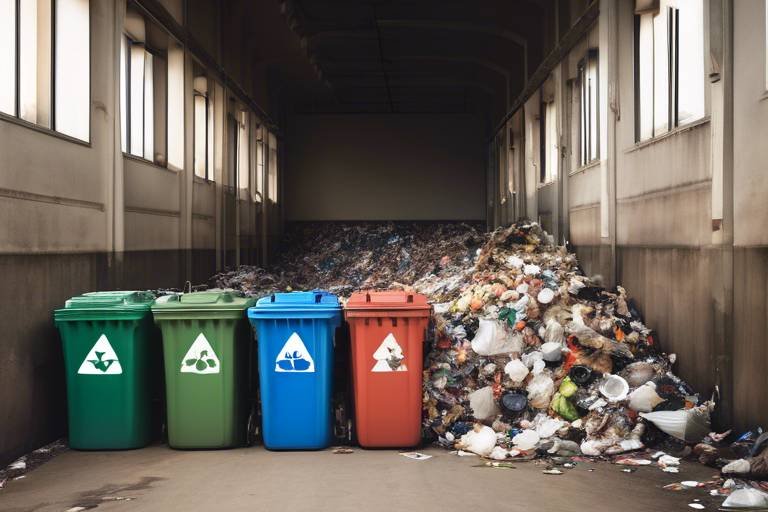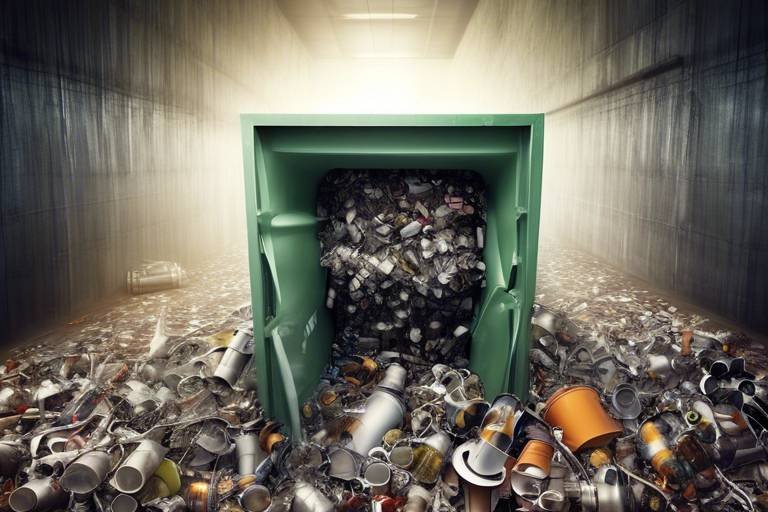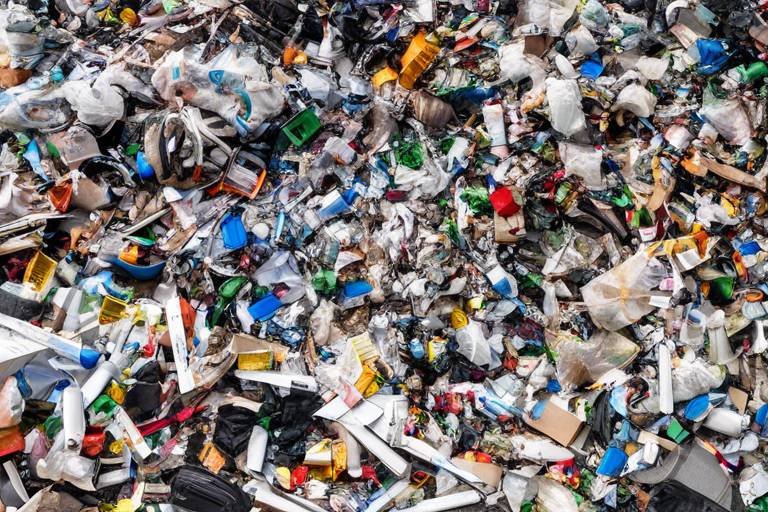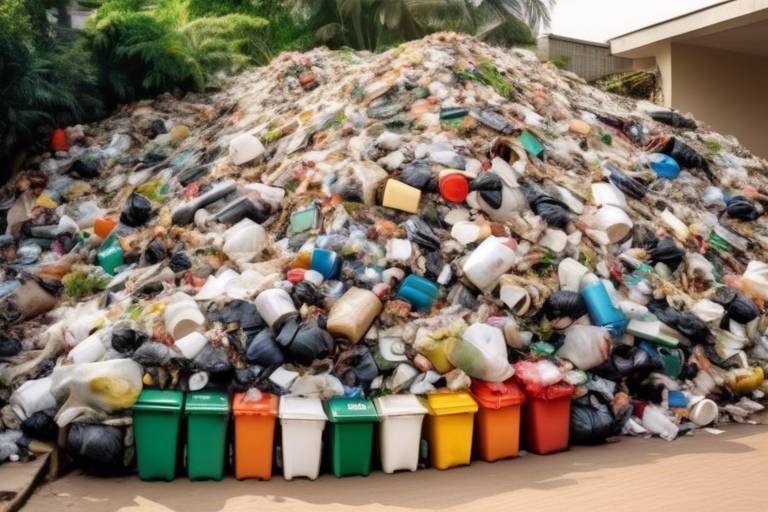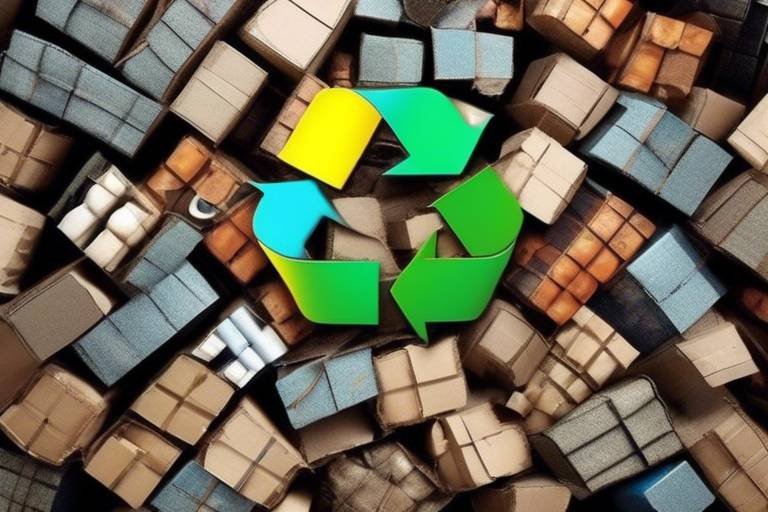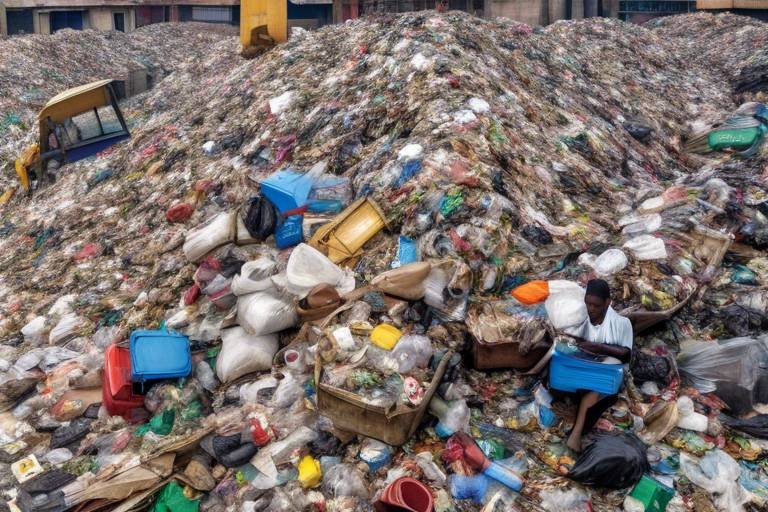What happens to Old Cars - The Process of Car Recycling
Have you ever wondered what happens to your old car after it has seen better days? The journey of an old car is not just a tale of rust and decay; it’s a fascinating process of recycling that transforms waste into valuable resources. When a car reaches the end of its life, it embarks on a new adventure, one that significantly impacts our environment and economy. This article explores the recycling process, highlighting how each component of an old car can be salvaged, repurposed, or transformed into something entirely new.
Understanding the significance of car recycling helps highlight its environmental benefits, including reducing waste, conserving resources, and minimizing pollution. With millions of cars being retired every year, the need for effective recycling processes is more critical than ever. Recycling not only cuts down on landfill waste but also contributes to a circular economy where materials are reused instead of discarded. It’s a win-win for both the planet and the economy!
The recycling process involves several stages, from dismantling to shredding, ensuring that valuable materials are recovered efficiently and responsibly. Each step is crucial in maximizing the recovery of materials while minimizing environmental impact. Let’s break down these stages further.
Dismantling is the initial step where reusable parts are removed. This process requires skilled labor to safely extract components like engines and transmissions. Imagine a surgeon carefully operating on a patient; that’s how meticulous dismantlers are when handling old cars. They assess each vehicle, identifying parts that can be salvaged and reused. Commonly salvaged parts include:
- Engines
- Transmissions
- Batteries
- Tires
By salvaging these components, we not only reduce the need for new production but also save energy and resources.
Many parts, such as batteries and tires, can be salvaged for resale or reuse, contributing to a circular economy. For instance, recycled tires can be transformed into playground surfaces or road materials, while batteries can be refurbished for new vehicles or energy storage systems. This process not only saves money but also promotes sustainability. It’s like giving a second life to something that would otherwise end up in a landfill.
Dismantling also helps prevent hazardous materials from entering landfills, promoting a cleaner environment and ensuring compliance with environmental regulations. Cars contain various hazardous substances, such as oils, fluids, and heavy metals. Proper dismantling ensures these materials are handled safely, minimizing the risk of contamination.
After dismantling, cars are shredded into smaller pieces, allowing for the recovery of metals, plastics, and glass, which can be recycled into new products. This stage is akin to turning a whole fruit into juice; the essence of the materials is extracted and repurposed. The shredding process is efficient, enabling recyclers to sort through the materials quickly and effectively. The recovered materials can then be sold to manufacturers who will use them in the production of new vehicles or other products.
Recycling car materials significantly reduces resource consumption and energy use, leading to lower greenhouse gas emissions and a smaller carbon footprint. By choosing recycled materials, manufacturers can produce new vehicles with less impact on the environment.
Metals like steel and aluminum are highly recyclable, allowing manufacturers to produce new vehicles with a reduced environmental impact compared to using virgin materials. For example, recycling aluminum saves up to 95% of the energy required to produce it from raw materials. This is a massive saving in terms of both energy and emissions.
Recycling plastics and glass from old cars contributes to reducing landfill waste and supports the production of new materials, promoting sustainability in manufacturing. Each recycled plastic bottle or glass shard represents a step towards a cleaner planet. By incorporating recycled materials, manufacturers can also reduce production costs, thus benefiting consumers.
Despite its benefits, car recycling faces challenges such as the need for advanced technology, regulatory compliance, and the management of hazardous materials. These challenges must be addressed to improve the efficiency and effectiveness of recycling processes.
Emerging technologies are essential for improving the efficiency of car recycling processes, enabling better separation and recovery of materials. Innovations like automated sorting systems and advanced shredding techniques can significantly enhance material recovery rates, making recycling even more effective.
Adhering to environmental regulations is crucial for recycling facilities, ensuring safe handling of hazardous substances and promoting sustainable practices. Compliance not only protects the environment but also fosters trust within the community, showcasing a commitment to responsible recycling.
As the automotive industry evolves, the future of car recycling will focus on innovation, increased efficiency, and enhanced sustainability practices to meet growing environmental concerns. The rise of electric vehicles (EVs) presents new challenges and opportunities in recycling.
With the rise of electric vehicles, recycling processes must adapt to handle new materials like lithium-ion batteries, presenting both challenges and opportunities. As EV adoption grows, so does the need for effective recycling solutions that can safely process these components.
Research and development in innovative recycling techniques will play a vital role in improving material recovery rates and reducing the overall environmental impact of car disposal. By embracing new technologies and methods, we can ensure that the recycling process remains efficient and sustainable.
Q: What happens to the hazardous materials in old cars?
A: Hazardous materials are carefully removed during the dismantling process to prevent contamination and are disposed of according to environmental regulations.
Q: Can all parts of a car be recycled?
A: While many parts can be recycled, some components, especially those containing hazardous materials, require special handling and cannot be recycled in standard processes.
Q: How does recycling cars help the environment?
A: Recycling cars reduces waste in landfills, conserves natural resources, and lowers greenhouse gas emissions by reusing materials instead of producing new ones from raw resources.

The Importance of Car Recycling
Car recycling is not just a trend; it’s a vital part of our journey towards a sustainable future. Imagine this: every year, millions of vehicles reach the end of their life cycle, becoming rusting hulks that occupy valuable space in landfills. By recycling these old cars, we can dramatically reduce waste and conserve precious resources. It's like giving a second life to materials that would otherwise be discarded, allowing us to reuse metals, plastics, and other components in new products.
But why should we care about recycling cars? Well, the environmental benefits are significant. When we recycle, we not only reduce the amount of waste that ends up in landfills but also minimize pollution. For instance, recycling metals from old cars uses up to 75% less energy than creating new metals from raw materials. This energy saving translates into lower greenhouse gas emissions, which is crucial in combatting climate change. It’s a win-win situation!
Moreover, car recycling contributes to a circular economy. This means that instead of following a linear path where we take, make, and dispose, we create a system where materials are continuously reused. The components salvaged from old vehicles can be refurbished and sold, reducing the need for new production. For example, parts like batteries, tires, and engines can often find new homes in other vehicles or industries. This not only saves money but also helps in preserving our environment.
In addition to conserving resources and reducing pollution, car recycling also plays a role in job creation. The recycling industry employs thousands of workers, from dismantlers to salespeople, all contributing to a greener economy. With the right policies and practices in place, we can expand this sector further, creating even more opportunities for sustainable employment.
In summary, the importance of car recycling cannot be overstated. It serves as a critical mechanism for reducing waste, conserving resources, minimizing pollution, and fostering economic growth. By embracing car recycling, we are not just helping the environment; we are paving the way for a healthier planet for future generations. So, the next time you think about that old car sitting in your driveway, remember: it holds the potential for a brighter, more sustainable future.

The Car Recycling Process
The journey of an old car doesn't end when it reaches the junkyard; in fact, it's just the beginning of an intricate recycling process that aims to recover valuable materials while minimizing environmental impact. This process involves several critical stages, each designed to ensure that as much material as possible is salvaged and repurposed. Think of it as a well-orchestrated symphony, where each musician plays their part to create a harmonious outcome – in this case, a cleaner planet and a more sustainable future.
The first step in the car recycling process is dismantling. Skilled laborers carefully take apart the vehicle, extracting reusable components like engines, transmissions, and even smaller parts such as headlights and mirrors. This stage is crucial because it allows for the recovery of parts that can be resold or reused, thereby reducing the demand for new products. Imagine a treasure hunt where every piece unearthed contributes to a larger goal of sustainability. The dismantling process not only saves valuable resources but also prevents hazardous materials from entering landfills, which could otherwise lead to environmental degradation.
Dismantling is no small feat; it requires expertise and precision. Technicians must navigate through a maze of wires, fluids, and metallic components to ensure that everything is handled safely. For instance, the extraction of batteries must be done with care to avoid any spills that could harm the environment. Each part removed from the car is meticulously cataloged, creating a detailed inventory that helps in the resale process. This careful attention to detail not only enhances the efficiency of recycling but also ensures compliance with environmental regulations.
Among the components that can be salvaged, some of the most significant include:
- Batteries: Often refurbished for reuse in other vehicles.
- Tires: Can be retreaded or recycled into various products.
- Glass: Recycled into new glass products or used in construction materials.
This salvaging process is a key part of the circular economy, where materials are kept in use for as long as possible, thus minimizing waste and the need for new production. Just like a chef who uses every part of the ingredient to create a delicious meal, car recyclers ensure that nothing goes to waste.
One of the most significant aspects of dismantling old cars is the environmental benefit it provides. By preventing hazardous materials, such as oil, coolant, and heavy metals, from leaching into the soil and water supply, the recycling process promotes a cleaner environment. Furthermore, dismantling facilities must adhere to strict environmental regulations, ensuring that they handle hazardous substances safely and responsibly. This compliance not only protects the environment but also enhances the reputation of the recycling industry.
After the dismantling phase, the next step is shredding. This involves breaking down the remaining metal and non-metal materials into smaller pieces, which facilitates the recovery of metals, plastics, and glass. The shredding process is akin to a blender turning whole fruits into a smooth, drinkable juice; it transforms the car into raw materials that can be reused in manufacturing new products. The efficiency of this stage is paramount, as it allows recyclers to maximize the recovery of valuable materials while minimizing waste.
Once the cars are shredded, the materials are sorted using magnets and air classifiers. Metals like steel and aluminum are separated and sent to smelting facilities, where they are melted down and reformed into new products. This not only conserves natural resources but also significantly reduces energy consumption compared to producing metals from raw ore. The recycling of plastics and glass follows a similar path, contributing to a sustainable manufacturing ecosystem. Essentially, the car recycling process transforms old vehicles into new opportunities, proving that nothing is truly wasted.
Q: What happens to the fluids in the car during recycling?
A: All fluids, such as oil and coolant, are drained and disposed of according to environmental regulations to prevent contamination.
Q: Can all parts of a car be recycled?
A: While most parts can be recycled, some hazardous materials must be handled with care and may not be recyclable.
Q: How does car recycling benefit the environment?
A: Car recycling reduces waste, conserves natural resources, and minimizes pollution, leading to a cleaner and healthier planet.
Q: Is it expensive to recycle a car?
A: Many recycling facilities offer cash for old cars, making it a financially viable option for car owners.

Dismantling Old Cars
Dismantling old cars is an essential first step in the recycling process, acting as the gateway to a more sustainable automotive future. This process is not just about tearing apart a vehicle; it requires skilled labor and a keen understanding of each component's value. Imagine a treasure hunt, where every piece of metal, plastic, and rubber holds potential for a second life. The dismantling process begins with the careful assessment of the vehicle to identify which parts can be salvaged and reused.
During dismantling, technicians meticulously remove various components, ensuring that reusable parts are extracted safely. This is akin to a surgeon performing an operation—precision and care are crucial. Some of the most commonly salvaged parts include:
- Engines: Often refurbished and sold for use in other vehicles.
- Transmissions: Another vital component that can be repaired and resold.
- Batteries: Especially important for electric vehicles, these can be recycled or repurposed.
- Wheels and Tires: Can be retreaded or recycled into new products.
Furthermore, dismantling is not just about reclaiming valuable parts; it also plays a critical role in environmental protection. By carefully extracting hazardous materials, such as fluids and batteries, the risk of pollution is significantly reduced. This proactive approach ensures that toxic substances do not seep into the ground or water systems, safeguarding our environment for future generations.
In addition to environmental benefits, dismantling old cars contributes to the circular economy. By salvaging usable parts, we reduce the demand for new manufacturing, which in turn conserves resources and energy. It's a win-win situation where both the economy and the environment benefit. As we advance towards a more sustainable future, the process of dismantling old cars will continue to evolve, integrating new technologies and practices that enhance efficiency and safety.
In summary, dismantling old cars is a complex yet rewarding process that sets the stage for effective recycling. It requires skilled workers who understand the intricacies of automotive components and the importance of environmental stewardship. As we embrace this practice, we take significant steps toward reducing waste and promoting a greener planet.
Q: What happens to the parts that cannot be reused?
A: Parts that cannot be reused are often recycled or disposed of in an environmentally responsible manner. Many facilities have systems in place to ensure that waste is minimized and handled correctly.
Q: How do recycling facilities ensure safety during the dismantling process?
A: Recycling facilities follow strict safety protocols and regulations to protect workers and the environment. This includes training employees, using protective gear, and implementing proper waste disposal methods for hazardous materials.
Q: Can I sell my old car for recycling?
A: Absolutely! Many recycling facilities will buy old cars, regardless of their condition. This not only helps you get some cash but also ensures that the vehicle is disposed of responsibly.

Salvaging Usable Parts
When it comes to recycling old cars, one of the most exciting aspects is the salvaging of usable parts. Imagine a treasure hunt where each component holds the potential for a new life, either in another vehicle or as a standalone product. This part of the recycling process is not just about dismantling; it’s about recognizing the value in what might otherwise be considered junk. Skilled technicians meticulously extract parts like engines, transmissions, and even interior components. These parts can be refurbished and resold, significantly contributing to a more sustainable economy.
Consider this: a typical vehicle is composed of thousands of parts, and many of these can be reused. For instance, a functioning battery can be recharged and used again, while tires can be retreaded and given a second chance on the road. Other components, such as:
- Windshields - Often intact and can be reused in other vehicles.
- Headlights - Still functional, these can find new homes in other cars.
- Seats - Upholstery can be cleaned and refurbished for resale.
Moreover, salvaging parts not only reduces waste but also minimizes the need for new production, which in turn conserves resources and energy. This circular economy approach is vital for sustainability, as it allows us to make the most out of every vehicle.
However, it’s not just about salvaging any part; it’s about salvaging the right parts. The focus is on quality and functionality. Parts that are outdated or damaged beyond repair are typically recycled in other ways, such as shredding and separating materials for reuse. This careful selection process ensures that only the best components are salvaged, promoting a greener and more efficient recycling system.
As we move forward, the role of technology in salvaging usable parts is becoming increasingly important. Advanced tools and techniques allow recyclers to identify and extract parts more efficiently, ensuring a higher recovery rate of valuable materials. This innovation not only makes the process faster but also enhances the overall effectiveness of car recycling.
In summary, salvaging usable parts is a crucial step in the car recycling process that not only benefits the environment but also supports the economy. By giving old car parts a new lease on life, we are taking significant strides towards a more sustainable future.
Q: What parts of a car can be salvaged?
A: Many parts can be salvaged, including engines, transmissions, batteries, tires, windshields, headlights, and seats, among others.
Q: How does salvaging parts help the environment?
A: Salvaging reduces waste, conserves resources, and minimizes the need for new production, which lowers energy consumption and pollution.
Q: Can salvaged parts be sold?
A: Yes, salvaged parts can be refurbished and sold, contributing to a circular economy.
Q: What happens to parts that cannot be salvaged?
A: Parts that are damaged beyond repair are typically recycled through shredding and separating materials for reuse.

Environmental Considerations
When it comes to car recycling, one of the most significant aspects to consider is its impact on the environment. Old cars, if not disposed of properly, can become a source of pollution, leaking hazardous materials into the soil and waterways. This is where the dismantling process plays a crucial role. By carefully dismantling vehicles, recycling facilities can prevent these harmful substances from entering landfills and the surrounding environment. Think of it as performing a delicate surgery on a vehicle, ensuring that every part is handled with care.
During the dismantling phase, various components are extracted, and this includes not just the valuable parts but also those that could pose environmental risks. For instance, batteries, fluids, and certain metals can be detrimental if they seep into the ground. By adhering to strict environmental regulations, recycling centers can manage these hazardous materials effectively, thereby promoting a cleaner and healthier planet.
Moreover, the recycling process contributes to a circular economy. By salvaging usable parts, we reduce the need for new production, which in turn conserves energy and natural resources. This is essential in today’s world, where resource depletion is a growing concern. For example, recycling one ton of steel can save around 2,500 pounds of iron ore, 1,400 pounds of coal, and 120 pounds of limestone. These savings are not just numbers; they represent a significant reduction in the environmental footprint associated with mining and manufacturing.
Additionally, recycling helps to minimize the overall carbon emissions associated with vehicle production. The process of creating new materials from raw resources is energy-intensive and often results in a higher output of greenhouse gases. In contrast, recycling existing materials requires significantly less energy, making it a more sustainable option. This is particularly important as we face the urgent challenge of climate change.
In summary, the environmental considerations in car recycling are multifaceted. From preventing pollution to conserving resources, the benefits are clear. By choosing to recycle old cars, we not only protect our planet but also contribute to a more sustainable future. The next time you think about what happens to an old car, remember that its journey doesn't have to end in a landfill; it can be reborn through recycling, contributing positively to our environment.
- What happens to hazardous materials in old cars? Hazardous materials, such as batteries and fluids, are carefully removed during the dismantling process to prevent environmental contamination.
- How does recycling reduce carbon emissions? Recycling requires less energy compared to producing new materials, leading to a decrease in greenhouse gas emissions.
- Can all parts of a car be recycled? While many parts can be recycled, some components may not be suitable for reuse and must be disposed of properly.
- What are the benefits of a circular economy in car recycling? A circular economy reduces the demand for new resources, conserves energy, and minimizes waste, contributing to environmental sustainability.

Shredding and Material Recovery
After the careful dismantling of old cars, the next crucial step in the recycling process is shredding. This phase is not just about breaking down the vehicle into smaller pieces; it’s about maximizing the recovery of valuable materials. When a car is shredded, it is fed into a powerful machine that breaks it down into fragments, typically the size of a fist. This process allows for the efficient separation of various materials, including metals, plastics, and glass, which can then be recycled into new products.
One of the most significant advantages of shredding is that it facilitates the recovery of metals. Cars are primarily made of steel and aluminum, both of which are highly recyclable. In fact, recycling aluminum can save up to 95% of the energy required to produce new aluminum from raw materials. Once shredded, the metal fragments can be easily sorted using magnets and other technologies, allowing for a high recovery rate. The table below illustrates the typical composition of materials found in an average car:
| Material Type | Percentage Composition |
|---|---|
| Steel | 55% |
| Aluminum | 8% |
| Plastic | 10% |
| Glass | 5% |
| Rubber | 5% |
| Other Materials | 17% |
Furthermore, the shredding process also allows for the recovery of plastics and glass. These materials, once separated, can be processed and repurposed into new products, significantly reducing the amount of waste sent to landfills. For instance, recycled plastics can be transformed into items ranging from new car parts to everyday consumer goods, while glass can be melted down and reformed into new containers or fibrous materials.
However, it’s essential to note that the shredding process must be conducted with care to ensure that hazardous materials, such as oils, fluids, and batteries, are managed properly. This is where the expertise of recycling facilities comes into play. They must adhere to strict environmental regulations to ensure that harmful substances are disposed of safely, preventing any contamination of the environment.
In conclusion, shredding and material recovery are pivotal components of the car recycling process. By efficiently breaking down vehicles and recovering valuable materials, we not only contribute to a sustainable future but also help in reducing the overall environmental impact of car disposal. This process is a testament to how recycling can turn what once was a discarded vehicle into a treasure trove of reusable materials.
- What happens to the materials after shredding?
After shredding, materials are separated and sent to various recycling facilities where they are processed into new products. - Are all cars recyclable?
Most cars are recyclable, but certain factors like the condition of the vehicle and the presence of hazardous materials can affect the recycling process. - How can I ensure my old car is recycled properly?
It’s best to contact a certified recycling facility that follows environmental regulations to ensure your car is disposed of responsibly.

Benefits of Recycling Car Materials
The benefits of recycling car materials extend far beyond mere waste reduction; they represent a significant stride towards achieving a sustainable future. When we recycle old cars, we are not just salvaging parts; we are actively participating in a circular economy that emphasizes resource conservation and environmental responsibility. By reusing and repurposing materials, we can significantly reduce the amount of raw materials needed for new vehicle production. This not only conserves natural resources but also minimizes the energy consumption associated with extracting and processing these materials.
Consider the impact of recycling metals, plastics, and glass. For instance, recycling steel and aluminum can lead to a remarkable reduction in energy use. According to industry studies, recycling aluminum saves up to 90% of the energy required to produce new aluminum from raw ore. This is akin to the energy savings achieved by not having to mine, refine, and transport new materials. Additionally, recycling metals like steel can reduce greenhouse gas emissions by up to 58%. This is a powerful reminder of how every old car can contribute to a cleaner environment.
Moreover, the recycling of plastics and glass from vehicles also plays a crucial role in reducing landfill waste. As we know, plastics take hundreds of years to decompose, and when they end up in landfills, they contribute to soil and water pollution. By recycling these materials, we not only divert waste from landfills but also support the production of new, sustainable materials. For example, recycled plastics can be transformed into products ranging from clothing to furniture, thus giving them a second life and reducing the demand for new plastic production.
In addition to environmental benefits, car recycling also has economic advantages. The recycling industry creates jobs and stimulates the economy. According to the Institute of Scrap Recycling Industries, the recycling sector supports over 1.1 million jobs in the United States alone. This highlights how recycling not only benefits the planet but also provides livelihoods for many individuals and families. It’s a win-win situation that underscores the importance of recycling car materials.
To sum it up, the benefits of recycling car materials are multi-faceted. They encompass environmental conservation, energy savings, economic growth, and a significant reduction in pollution. As we continue to advance our recycling technologies and practices, we can only anticipate greater efficiencies and benefits in the future. Every old car recycled is a step towards a more sustainable planet, making it essential for us to embrace and promote car recycling as a vital part of our environmental strategy.
- What materials can be recycled from old cars?
Common materials that can be recycled include metals (like steel and aluminum), plastics, glass, batteries, and tires.
- How does car recycling benefit the environment?
Car recycling reduces waste, conserves natural resources, lowers greenhouse gas emissions, and prevents hazardous materials from contaminating the environment.
- Are there any economic benefits to car recycling?
Yes, the recycling industry creates jobs, stimulates the economy, and reduces costs associated with raw material extraction and processing.
- Can electric vehicles be recycled?
Absolutely! Electric vehicles can be recycled, but they require specialized processes to handle components like lithium-ion batteries.

Metal Recycling
When we talk about , it’s like opening a treasure chest of possibilities. Old cars are not just heaps of rust; they are filled with valuable metals that can be reprocessed and reused. The most commonly recycled metals from vehicles include steel and aluminum. These metals are highly sought after because they can be melted down and formed into new products, all while consuming significantly less energy than producing new metals from raw materials.
Did you know that recycling just one ton of steel can save over 1,100 kg of iron ore, 630 kg of coal, and 120 kg of limestone? That's a massive reduction in resource consumption! This is where the magic of circular economy comes into play. By recycling metals from old cars, we not only reduce the demand for virgin materials but also minimize the environmental impact associated with mining and processing these resources.
Moreover, the process of metal recycling is not just beneficial for the environment; it also has economic advantages. The recycling industry creates jobs and stimulates economic growth. According to recent statistics, the recycling of metals contributes billions of dollars to the economy annually. This is a win-win situation where we get to save the planet while also boosting local economies!
However, the journey of metal recycling from old cars involves several steps. After the dismantling phase, where reusable parts are salvaged, the remaining metal is sent to shredding facilities. Here, it is processed into smaller pieces, which makes it easier to separate different types of metals. Advanced technologies, such as magnetic separation, play a crucial role in ensuring that metals are efficiently sorted and recovered. This not only enhances the recycling process but also ensures that we are getting the most out of every vehicle that is recycled.
In summary, metal recycling is a crucial aspect of the car recycling process that delivers significant environmental and economic benefits. It reduces resource consumption, lowers energy usage, and minimizes greenhouse gas emissions. As we continue to innovate and improve recycling technologies, the potential for metal recycling to contribute to a sustainable future becomes even greater.
- What types of metals can be recycled from old cars? The most common metals recycled from old cars include steel, aluminum, copper, and lead.
- How does recycling metals help the environment? Recycling metals reduces the need for mining new materials, conserves energy, and lowers greenhouse gas emissions.
- Can I recycle my old car myself? While you can salvage some parts, it’s best to take your car to a licensed recycling facility to ensure safe and responsible recycling.
- What happens to the metals after they are recycled? Recycled metals can be used to manufacture new products, including new vehicles, construction materials, and household items.

Plastic and Glass Recycling
When it comes to recycling old cars, plastic and glass are two materials that often get overlooked, but they play a crucial role in promoting sustainability. Did you know that a typical car contains around 15% plastic and about 10% glass? That’s a significant amount when you consider the millions of vehicles that reach the end of their life each year. Recycling these materials not only helps reduce landfill waste but also supports the production of new materials, thus closing the loop in the manufacturing process.
Plastics in vehicles can be found in various components, including dashboards, bumpers, and even in the wiring insulation. When these plastics are recycled, they can be transformed into new products, such as car parts, packaging materials, and even clothing fibers. This process not only conserves resources but also saves energy compared to producing plastics from scratch. For instance, recycling plastics can save up to 60% of the energy required to create new plastic from virgin materials.
On the other hand, glass is primarily found in windows and mirrors. The recycling process for glass is relatively straightforward and highly effective. Recycled glass can be used to produce new glass containers, insulation, and even new automotive glass. According to industry reports, recycling glass can save around 30% of the energy needed to produce new glass from raw materials. This energy savings is not just beneficial for manufacturers; it also leads to lower greenhouse gas emissions, contributing to a healthier planet.
However, recycling plastic and glass from old cars does come with its challenges. The presence of different types of plastics can complicate the recycling process, as they often require specific handling and processing techniques. Additionally, the glass must be carefully separated to avoid contamination, which can affect the quality of the recycled material. This is where advanced recycling technologies come into play, helping to streamline the process and improve the recovery rates of these valuable materials.
In conclusion, the recycling of plastic and glass from old cars is not just an environmental necessity; it's an opportunity to innovate and improve our recycling systems. By investing in better technologies and processes, we can enhance the efficiency of plastic and glass recycling, ultimately leading to a more sustainable automotive industry. As consumers, supporting companies that prioritize recycling efforts not only helps the environment but also encourages a circular economy that benefits us all.
- What types of plastics are typically recycled from cars?
Common plastics include polyethylene, polypropylene, and polyvinyl chloride (PVC), which are found in various car components. - How is glass from old cars recycled?
Glass is collected, cleaned, and processed into cullet, which is then melted down to create new glass products. - Are there any hazardous materials in car plastics and glass?
Some plastics may contain hazardous additives, so proper handling and recycling practices are essential to minimize risks. - Can recycled plastics from cars be used in new automotive parts?
Yes, recycled plastics can be used to manufacture new car parts, contributing to a more sustainable production process.

Challenges in Car Recycling
Despite the numerous benefits of car recycling, the industry faces several challenges that can hinder its effectiveness and efficiency. One of the primary obstacles is the need for advanced technology. As cars become more sophisticated, with a variety of materials and components that require specialized handling, recycling facilities must invest in cutting-edge technology to keep up. This includes systems for better separation of materials, as well as equipment capable of processing new materials found in modern vehicles.
Another significant challenge is regulatory compliance. Recycling facilities must adhere to a myriad of environmental regulations, which can vary significantly by region. These regulations are crucial for ensuring the safe handling of hazardous substances, such as batteries and fluids, that can pose risks to both human health and the environment. Compliance not only requires financial investment in training and equipment but also continuous monitoring and reporting, which can be burdensome for smaller operations.
Moreover, the management of hazardous materials is a complex issue. Old cars often contain substances like lead, mercury, and various chemicals that can be harmful if not disposed of correctly. Facilities must implement stringent protocols to manage these materials safely, which can complicate the recycling process. The potential for environmental contamination adds another layer of responsibility, making it imperative for recycling centers to prioritize safety and sustainability.
In addition to these challenges, the economic viability of car recycling can fluctuate. The prices for recycled materials can vary based on market demand, which can affect the profitability of recycling operations. When prices drop, some facilities may struggle to remain operational, leading to less recycling and more cars ending up in landfills. This economic uncertainty can deter investment in necessary technologies and improvements.
Lastly, there is a need for public awareness and education about the importance of car recycling. Many consumers may not be aware of the recycling options available to them or the environmental impact of their old vehicles. Increasing awareness can lead to more vehicles being recycled instead of abandoned or improperly disposed of. Addressing these challenges requires a concerted effort from industry stakeholders, government entities, and the public.
- What materials can be recycled from old cars? Most cars contain recyclable materials such as metals (steel, aluminum), plastics, glass, and rubber from tires.
- How does car recycling benefit the environment? Car recycling reduces the amount of waste in landfills, conserves natural resources, and minimizes pollution by properly disposing of hazardous materials.
- Are there any regulations governing car recycling? Yes, recycling facilities must comply with environmental regulations that ensure the safe handling and disposal of hazardous materials.
- What happens to the hazardous materials in old cars? Hazardous materials are carefully extracted and disposed of according to safety regulations to prevent environmental contamination.
- Can I recycle my car if it’s not working? Absolutely! Non-working cars can still be recycled, and many parts may be salvaged for reuse.

Technological Advancements
In the ever-evolving world of car recycling, play a pivotal role in enhancing the efficiency and effectiveness of the recycling process. Imagine a bustling recycling facility where high-tech machines work in harmony, breaking down old vehicles into their core components with precision. This kind of innovation not only streamlines operations but also maximizes the recovery of valuable materials. As we delve deeper into the topic, it's essential to recognize how these technologies are reshaping the landscape of car recycling.
One of the most significant advancements is the use of automated dismantling systems. These systems employ robotics and artificial intelligence to safely and efficiently remove parts from vehicles, reducing the risk of injury to workers and minimizing human error. This automation allows for a faster turnaround in dismantling operations, ensuring that reusable parts are extracted and processed without delay. As a result, facilities can handle a larger volume of vehicles, contributing to a more sustainable recycling ecosystem.
Furthermore, advancements in material separation technology have revolutionized the way recyclers handle mixed materials. Traditional methods often struggled to separate different types of plastics or metals, leading to contamination and reduced recyclability. However, with the introduction of sophisticated sorting technologies, such as near-infrared spectroscopy and eddy current separators, recyclers can now efficiently identify and separate materials based on their composition. This not only increases the purity of the recovered materials but also enhances their market value, making recycling a more profitable venture.
Moreover, the integration of data analytics into recycling operations has opened up new avenues for optimization. By analyzing data from various stages of the recycling process, facilities can identify bottlenecks, predict equipment failures, and improve overall operational efficiency. This data-driven approach allows recyclers to make informed decisions, ultimately leading to better resource management and reduced environmental impact.
As we look to the future, the introduction of blockchain technology is also on the horizon. This technology promises to enhance transparency and traceability in the recycling supply chain. By providing a secure and immutable record of materials from their source to their final destination, blockchain can help ensure that recycled materials are sourced responsibly and ethically. This level of transparency is increasingly important in a world where consumers are becoming more conscious of the environmental impact of their choices.
In summary, technological advancements are not just enhancing the efficiency of car recycling; they are transforming it into a more sustainable and economically viable industry. As we continue to innovate and adapt to new challenges, the future of car recycling looks brighter than ever. With the right technologies in place, we can ensure that our old cars are not just discarded but are instead transformed into valuable resources for the future.
- What is the main goal of car recycling?
The primary goal of car recycling is to recover valuable materials from old vehicles, reduce waste, and minimize environmental impact. - How does technology improve car recycling?
Technology enhances car recycling by automating processes, improving material separation, and utilizing data analytics for operational efficiency. - What materials can be recycled from old cars?
Commonly recycled materials include metals (like steel and aluminum), plastics, glass, and rubber from tires. - Are there any regulations for car recycling?
Yes, car recycling is subject to various environmental regulations to ensure safe handling of hazardous materials and promote sustainable practices.

Regulatory Compliance
When it comes to car recycling, regulatory compliance is not just a box to check; it's a vital component that ensures safety and environmental protection. Recycling facilities must adhere to a myriad of regulations designed to manage hazardous materials and promote sustainable practices. These regulations vary significantly by region, but their core aim remains the same: to protect our planet and the health of those who inhabit it.
One of the primary regulations involves the proper handling and disposal of hazardous substances found in old vehicles, such as batteries, fluids, and asbestos. Failure to comply can lead to severe environmental damage and hefty fines. For instance, lead-acid batteries, commonly used in cars, contain lead and sulfuric acid, both of which pose significant risks if not handled correctly. Recycling facilities must have clear protocols in place to ensure these materials are managed safely.
Furthermore, many countries have established specific guidelines that dictate how vehicles should be dismantled and processed. This includes the requirement to remove certain components before shredding the car body, ensuring that valuable materials are recovered efficiently. Some of the key compliance areas include:
- Environmental Impact Assessments: Facilities often need to conduct assessments to evaluate their potential impact on local ecosystems.
- Waste Management Plans: Developing comprehensive plans that outline how hazardous and non-hazardous waste will be handled is essential.
- Reporting and Documentation: Regular reporting on the volume of materials recycled and the methods used can help maintain transparency and accountability.
By adhering to these regulations, recycling facilities not only contribute to a cleaner environment but also enhance their operational efficiency. Compliance can lead to improved public perception, as consumers are increasingly drawn to businesses that demonstrate a commitment to sustainability. In essence, regulatory compliance in car recycling serves as both a legal requirement and a pathway to fostering trust and responsibility within the community.
1. Why is regulatory compliance important in car recycling?
Regulatory compliance ensures that hazardous materials are handled safely, protecting the environment and public health. It also helps recycling facilities operate legally and efficiently.
2. What are some hazardous materials found in old cars?
Common hazardous materials include lead-acid batteries, oil, coolant, and various fluids that can be harmful if not disposed of properly.
3. How do regulations vary by region?
Regulations can differ significantly from one country or state to another, with some areas having stricter guidelines on waste management and environmental impact.
4. How can recycling facilities ensure compliance?
Facilities can ensure compliance by implementing robust waste management plans, conducting regular training for employees, and staying updated with local regulations.

The Future of Car Recycling
The future of car recycling is poised for a transformative shift as the automotive industry evolves rapidly. With the proliferation of electric vehicles (EVs) and advancements in sustainable materials, recycling processes must adapt to meet new challenges and opportunities. Imagine a world where not only are old cars recycled efficiently, but the materials extracted are used to create the next generation of vehicles! This is not just a dream—it's becoming a reality.
Electric vehicles, in particular, present unique challenges for recycling. Unlike traditional vehicles, EVs contain components such as lithium-ion batteries that require specialized handling and processing. These batteries are not only valuable due to the metals they contain (like lithium and cobalt) but also pose environmental hazards if not disposed of correctly. As a result, the recycling industry is investing in technologies that can safely and effectively extract these materials, ensuring they are reused instead of ending up in landfills.
Furthermore, innovative recycling techniques are emerging, focusing on improving the efficiency of material recovery. For instance, advanced sorting technologies, such as artificial intelligence and robotics, are being integrated into recycling facilities. These technologies allow for better separation of materials, increasing the overall recovery rates. This means more metals, plastics, and glass can be salvaged from old cars, reducing the need for new raw materials and minimizing environmental impact.
As the industry moves forward, collaboration between automakers, recyclers, and technology developers will be crucial. By working together, these stakeholders can create a circular economy where materials are continuously reused, thus reducing waste and conserving resources. The goal is not just to recycle old cars but to create a sustainable system that benefits everyone—from manufacturers to consumers to the planet.
In addition, regulations are likely to evolve, pushing for stricter compliance and encouraging the development of greener recycling practices. This regulatory framework will help ensure that recycling facilities operate safely and sustainably, ultimately leading to a cleaner environment. As public awareness of environmental issues grows, consumers will increasingly demand transparency in how their vehicles are recycled, further driving the industry towards sustainable practices.
In summary, the future of car recycling is bright and full of potential. With the rise of electric vehicles, innovative technologies, and a collaborative approach among industry players, we can look forward to a more sustainable automotive landscape. The journey of a car doesn't have to end in a junkyard; instead, it can pave the way for a cleaner, greener future.
- What happens to electric vehicle batteries when they are recycled?
Electric vehicle batteries are processed to recover valuable materials like lithium, cobalt, and nickel. These materials can then be reused in new batteries, reducing the need for virgin resources.
- Are there regulations governing car recycling?
Yes, there are various regulations in place to ensure that car recycling is conducted safely and environmentally responsibly. These regulations vary by country and region.
- How can I ensure my old car is recycled properly?
To ensure your car is recycled properly, choose a certified recycling facility that follows environmental regulations and best practices for dismantling and recycling vehicles.

Electric Vehicle Recycling
The rise of electric vehicles (EVs) is revolutionizing the automotive landscape, but it also brings forth unique challenges in the recycling sector. As these vehicles become more prevalent, the need for effective recycling methods to handle their specific components is critical. Unlike traditional cars, electric vehicles are equipped with advanced technologies and materials, such as lithium-ion batteries, which require specialized processes for safe and efficient recycling. The journey of an EV at the end of its life cycle is not just about dismantling; it’s about understanding how to recover valuable materials while minimizing environmental impact.
One of the primary concerns with electric vehicle recycling is the management of lithium-ion batteries. These batteries are not only expensive but also contain materials that can be harmful if not disposed of properly. When recycled correctly, these batteries can yield significant quantities of cobalt, nickel, and lithium, which are essential for the production of new batteries. However, the recycling process for these batteries is complex and requires advanced technology to ensure that the materials are extracted safely and efficiently. In fact, it’s estimated that up to 95% of battery materials can be recovered through proper recycling techniques, which is a substantial improvement over traditional disposal methods.
Moreover, the recycling of electric vehicles extends beyond just the batteries. Components such as electric motors, wiring, and electronic systems also present opportunities for recovery. For instance, the electric motors contain valuable metals that can be reused in new manufacturing processes. Additionally, the plastics and composites used in EVs can be recycled to produce new automotive parts or other consumer products, contributing to a more sustainable circular economy.
To illustrate the significance of recycling in the context of electric vehicles, consider the following table that outlines the materials typically recovered from EVs:
| Material | Recycling Rate | Potential Uses |
|---|---|---|
| Lithium | Up to 95% | New batteries, electronic devices |
| Cobalt | Up to 95% | Battery production, electronics |
| Nickel | Up to 95% | Stainless steel, batteries |
| Aluminum | Up to 90% | New automotive parts, packaging |
| Plastic | Up to 80% | Consumer products, automotive parts |
As the automotive industry shifts towards sustainability, the recycling of electric vehicles will play a pivotal role in reducing the carbon footprint associated with vehicle production. The challenge lies not only in developing effective recycling processes but also in raising awareness among consumers about the importance of recycling EVs responsibly. As we embrace this new era of electric mobility, understanding the recycling landscape will ensure that we maximize the benefits of these innovative vehicles while protecting our planet for future generations.
- What materials are recovered from electric vehicles during recycling? Electric vehicles primarily yield lithium, cobalt, nickel, aluminum, and plastics, all of which can be repurposed for new products.
- How does recycling lithium-ion batteries benefit the environment? Recycling reduces the need for mining new materials, which can be environmentally damaging, and helps in conserving resources.
- Are there any regulations governing electric vehicle recycling? Yes, many countries have regulations to ensure safe handling and recycling of electric vehicle components, especially batteries.
- Can all electric vehicle parts be recycled? While many parts can be recycled, some components may require specialized processes due to their complexity or hazardous nature.

Innovative Recycling Techniques
As we march into a future that increasingly prioritizes sustainability, the automotive industry is not left behind. Innovative recycling techniques are emerging as game-changers in the quest to minimize waste and maximize resource recovery. These methods not only enhance the efficiency of recycling processes but also help in adapting to the complexities of modern vehicles, especially with the rise of electric cars.
One of the most exciting advancements is the use of automated dismantling robots. These robots are designed to identify and remove valuable components with incredible precision. Imagine a robotic arm delicately extracting a lithium-ion battery from an electric vehicle, ensuring that it’s done safely and without damaging other parts. This technology not only speeds up the dismantling process but also significantly reduces the risk of hazardous material spills, making the environment safer for workers.
Another innovative approach is the use of pyrolysis for recycling plastics. This method involves heating plastics in the absence of oxygen, breaking them down into their basic components. The result? A range of reusable materials that can be transformed back into high-quality plastics. This technique is especially beneficial given that plastics from vehicles are often complex mixtures that are difficult to recycle using traditional methods. By using pyrolysis, we can turn what would normally be waste into valuable resources, thus closing the loop in the circular economy.
Moreover, the integration of artificial intelligence (AI) is revolutionizing the sorting process. AI systems can analyze materials at a speed and accuracy that far surpasses human capabilities. For instance, they can quickly identify different types of metals, plastics, and glass, sorting them into appropriate categories for recycling. This not only improves efficiency but also enhances the quality of the recycled materials, making them more desirable for manufacturers.
To put it all into perspective, here’s a table that summarizes some of these innovative techniques and their benefits:
| Recycling Technique | Description | Benefits |
|---|---|---|
| Automated Dismantling Robots | Robots that safely extract valuable components from vehicles. | Increased efficiency, reduced risk of hazardous spills. |
| Pyrolysis | A process that breaks down plastics into reusable materials through heating. | Turns waste into valuable resources, suitable for complex plastics. |
| Artificial Intelligence | AI systems that sort materials quickly and accurately. | Improved sorting efficiency and quality of recycled materials. |
As we explore these innovative techniques, it’s clear that the future of car recycling is bright. By embracing technology, we can significantly enhance our recycling capabilities, reduce environmental impact, and pave the way for a more sustainable automotive industry. The journey of an old car doesn’t have to end in a landfill; instead, it can transform into a treasure trove of resources, thanks to these groundbreaking methods.
- What are the main benefits of car recycling? Car recycling helps conserve resources, reduces pollution, and minimizes landfill waste.
- How do innovative techniques improve recycling? They enhance efficiency, improve material recovery rates, and ensure safer processing of hazardous materials.
- Can all parts of a car be recycled? While many parts can be recycled, some components, especially those containing hazardous materials, require special handling.
Frequently Asked Questions
- What happens to my old car when I recycle it?
When you recycle your old car, it goes through a systematic process that includes dismantling, shredding, and material recovery. Initially, reusable parts are removed by skilled technicians. After that, the car is shredded into smaller pieces to recover metals, plastics, and glass, which can be recycled into new products.
- Why is car recycling important for the environment?
Car recycling plays a crucial role in conserving resources and reducing pollution. By recycling old vehicles, we minimize landfill waste, prevent hazardous materials from contaminating the environment, and reduce the energy consumption associated with producing new materials. It's a win-win for both the planet and our economy!
- What parts of an old car can be salvaged?
Many components of an old car can be salvaged for reuse, including batteries, tires, engines, and transmissions. These parts can be resold or repurposed, contributing to a circular economy and reducing the need for new production.
- How does the shredding process work?
After dismantling, cars are fed into a shredder, which breaks them down into smaller pieces. This process allows recyclers to separate valuable materials, such as metals and plastics, from non-recyclable waste, making it easier to process and recycle these materials into new products.
- What are the challenges faced in car recycling?
Car recycling faces several challenges, including the need for advanced technology to improve efficiency and material recovery. Additionally, recycling facilities must comply with strict environmental regulations to ensure safe handling of hazardous materials, which can be complex and costly.
- How is electric vehicle recycling different from traditional car recycling?
Electric vehicle recycling presents unique challenges due to the presence of lithium-ion batteries and other advanced materials. Recycling processes must adapt to handle these components safely and efficiently, which requires specialized knowledge and technology.
- What are the benefits of recycling metals from old cars?
Recycling metals like steel and aluminum significantly reduces the need for virgin materials, conserving natural resources and lowering greenhouse gas emissions. It allows manufacturers to produce new vehicles with a smaller environmental footprint, making it a sustainable practice.
- Can I recycle my car myself?
While some parts of your car can be recycled or sold individually, handling the entire recycling process yourself can be complicated and potentially hazardous. It's best to work with a certified recycling facility that specializes in car recycling to ensure safe and responsible disposal.

